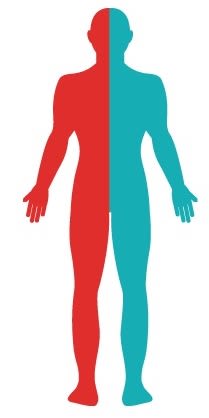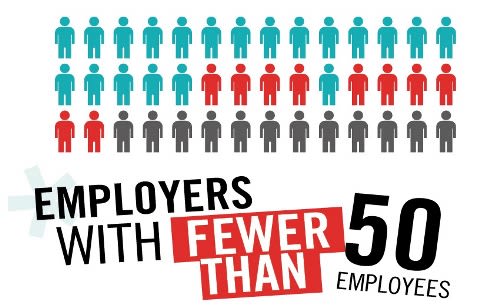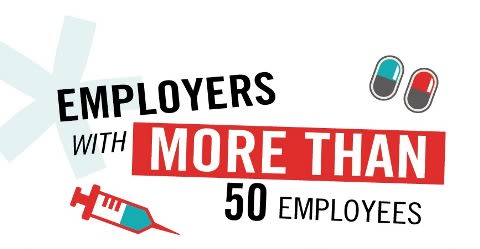Getting Ready for Healthcare Reform

The Patient Protection and Affordable Care Act, known as Obamacare, will profoundly affect how most businesses handle health benefits, and the changes begin this fall. In July, President Barack Obama delayed the provision that large businesses insure their employees or face IRS penalties, so companies with more than 50 employees have some time. Biz(941) has scoured the key provisions of the law as it stands today and talked to local experts in order to guide both employers and the self-employed on what’s coming, what to know and where to find help. -By David Ball

WHAT'S COMING: THE INDIVIDUAL MANDATE
Starting in 2014, nearly every U.S. citizen has to carry health insurance or pay a penalty of 1 percent of yearly income or $95, whichever is greater. (Penalties jump to 2.5 percent or $695 by 2016). Florida, through the federal government, will offer a new marketplace known as an “exchange” to sell insurance policies. The exchange will be mostly online and allow easy comparing of plans and prices. Premiums will be partially subsidized for workers earning up to 400 percent of the federal poverty level, or about $46,000 ($78,000 for family of three). Enrollment begins Oct. 1, 2013.
WHAT TO KNOW: EXCHANGES AREN’T FOR EVERYONE
Prices have not been officially set for plans in the exchanges, but premium estimates range from $250 to $800 a month. It’s possible an individual insurance plan brokered through an agent—the current model for most self-employed—might offer better coverage, especially if you earn too much to qualify for a subsidy. Also, people who have access to coverage through their spouse’s employer do not qualify for subsidies.
PRO TIP: RENEW YOUR CURRENT COVERAGE NOW
“Some insurance companies will allow you to reset your renewal date to December 2013, so you can keep your current coverage through most of 2014. Your rate will probably go up, but you’ll have the whole year to see how the exchanges shake out and for the government to potentially modify the laws even further.” –Bill Steffen, Florida and Arizona insurance agent and owner of ReplaceCobra.com.

WHAT’S COMING: THE SHOP MARKETPLACE
In addition to exchanges for individual insurance plans, the federal government is establishing a marketplace just for small businesses, called the Small Business Health Options Program (SHOP). It, too, will offer easy comparing of group plans and prices. Enrollment begins Oct. 1. Employers with up to 100 employers will be able to use SHOP plans in 2016.
WHAT TO KNOW: TO INSURE OR NOT?
Starting in 2014, businesses that use a SHOP insurance plan and have fewer than 25 full-time employees, pay average wages of $50,000 or less and pay at least 50 percent of their employees’ insurance premiums can receive a 50 percent credit towards their total health plan costs. There is no credit for businesses with 26 to 50 full-time employees, and offering a SHOP plan prohibits your employees from using subsidies in the individual marketplace. Therefore, it may be beneficial to not offer any insurance and allow your employees to qualify for cheaper and possibly better plans through the exchange or potentially an expanded Medicaid.
PRO TIP: DO THE MATH
Do the math. “I’ve told people that if you don’t have a lot of employees and they are low-income workers, like in the service industry, you really need to think about not offering benefits. Instead, you can set up a health reimbursement arrangement, which is tax free for the employee and tax deductible for the employer. It’s a planned or defined contribution to an employee’s healthcare. Instead of spending the money on a benefits package, you can give it directly to employees to purchase their own plan on the exchange.” –Ron Krupa, consultant with Track 1 Benefits in Lakewood Ranch.
*Correction: Because of a Sept. 13 IRS ruling (Technical Release No. 2013-03), this tip incorrectly states how Health Reimbursement Arrangements (HRAs) would be handled under the new law starting in 2014. In fact, HRAs generally can only be offered by employers if they also offer group healthcare coverage to their employees. Standalone HRAs cannot be used by employees to buy their own insurance privately or on the new public healthcare exchanges.

WHAT’S COMING: EMPLOYER MANDATE
Starting in 2015, employers with 50 or more full-time employees are required to offer affordable health coverage to all employees if at least one employee would qualify for a credit on the individual exchange (i.e. earns less than $43,000). Penalty for not offering insurance would be an IRS payment equal to the number of full-time employees, minus 30, times $2,000. Example: 100-employee business would pay $140,000.
WHAT TO KNOW: START COUNTING HEADS
Full-time employees are defined as working at least 30 hours per week, and part-time is 15 hours. IRS considers two part-time workers equaling a full-time. 2014’s employee count will be used to determine your requirements in 2015. Two separate companies with a shared owner will combine their employee counts. The law also applies to nonprofits. “Affordable” health coverage is defined as a premium costing the employee no more than 9.5 percent of his or her annual household income. Employers can offer multiple coverage options and only the lowest-cost option needs to be deemed “affordable.”
PRO TIP: IT'S NOT JUST ABOUT THE NUMBERS
“I have heard that employers are looking to reduce employees to come under 50. That’s certainly a consequence that wasn’t anticipated. When we looked at the numbers, it was cheaper to pay the penalty than to provide coverage. But it’s way too important to us to ever consider that as an option. You still have to attract talent, and you don’t want your best employees leaving for a company that provides those benefits.” –Lisa Krouse, vice president for human resources, FCCI Insurance Group.
FOR HELP
Insurance exchange information and subsidy calculators:
kff.org/interactive/subsidy-calculator
laborcenter.berkeley.edu/healthpolicy/calculator
General health reform information for businesses and individuals: